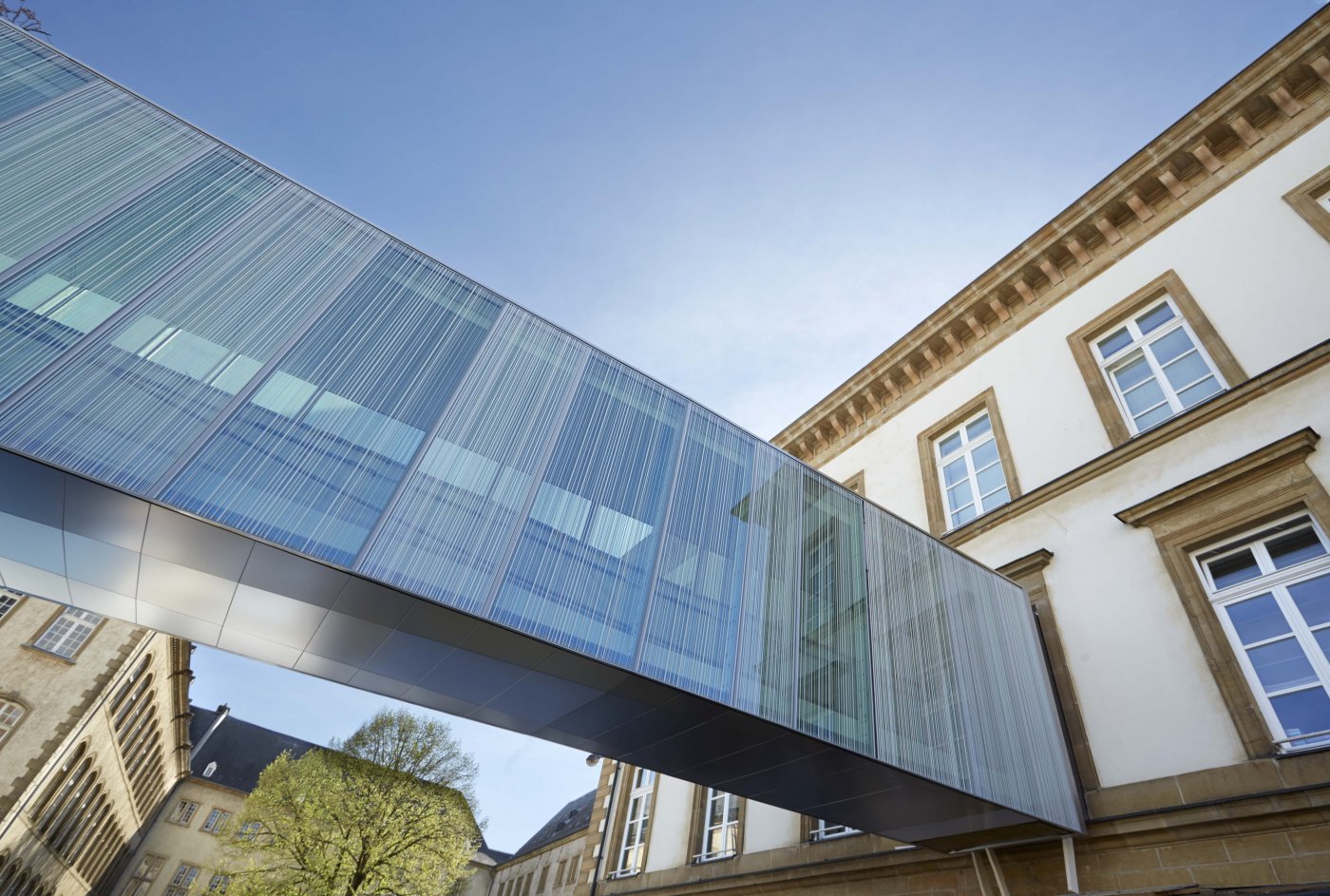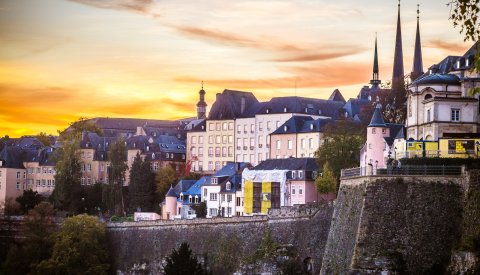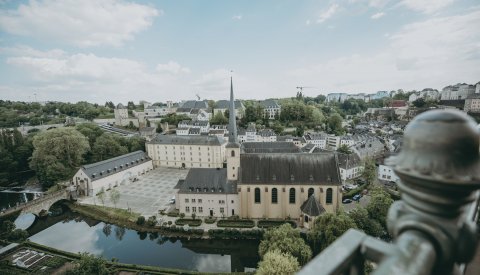From castle to fortress
In Roman times, two roads intersected near today's Place du Marché-aux-Poissons, where a fortified tower was located. In 963, this land passed into the possession of Count Siegfried following an exchange with St Maximin's Abbey in Trier. On the Bock promontory, not far from the castle bearing the name Lucilinburhuc, Siegfried built his own castle, considered today to be the birthplace of the city, the country and the nation.
Over time, the town grew and so in the 12th century, a second wall was built near the present-day Rue du Fossé, running parallel to the first perimeter wall, in order to protect the expanding settlements. In 1244, Countess Ermesinde granted a charter to the inhabitants of the burg, giving it city status. Work on building new fortifications around the upper city began in 1320, under the reign of John of Bohemia, also known as John the Blind, and was completed in 1398. The settlements in the Grund and Pfaffenthal, as well as the Plateau du Rham and Munster Abbey, were also nestled within this enclosure. In 1354, Luxembourg became a Duchy.
After the fortress was captured in 1443 by Burgundian troops under Philip the Good, the city of Luxembourg – one of the strongest fortresses on the continent – became a prominent piece in Europe's geopolitical games due to its tremendous strategic value and was coveted by all the major powers of the time. In 1482, following the death of Marie de Bourgogne, daughter of Charles the Bold and granddaughter of Philip the Good, Luxembourg fell into the hands of the Habsburgs. Between 1542 and 1544, the fortress changed hands several times, until the departure of the troops of Francis I of France in 1544, when Luxembourg reverted to the Habsburgs.
Following the siege by Louis XIV in 1683–84, French troops under the command of François de Blanchefort de Créquy recaptured the fortress. Between 1684 and 1698, French military engineer Marshal de Vauban had major new fortifications added to the existing structures. After the Peace of Ryswick, the Spanish took over in 1698, only to be ousted again by France in 1701. After the Treaties of Utrecht (1713) and Rastatt (1714), Austrian troops regained possession of the fortress and its casemates in 1715 – both these military structures were subsequently expanded. The Austrian troops remained in the city for the next 80 years.
The Fortress of Luxembourg was now one of the Austrian Netherlands' main strategic defences against possible French invasion: The fortifications erected by Marshal de Vauban were therefore extended and strengthened.
In 1795, the Fortress of Luxembourg – nicknamed the "Gibraltar of the North" – surrendered to the armies of the French Republic after a siege and blockade that lasted from November 1794 to June 1795. The Duchy of Luxembourg was incorporated into the French Republic under the name of Département des Forêts, later becoming part of the French Empire.
Sovereignty, neutrality, independence
Three key dates marked the course of history in the 19th century:
At the Congress of Vienna in 1815, Luxembourg became its own sovereign nation in the form of a Grand Duchy. It also became the personal property of the King of the Netherlands, who took on the title of Grand Duke of Luxembourg. At the same time, Luxembourg City became a federal fortress of the German Confederation, with a Prussian garrison stationed within its walls.
After the Belgian Revolution, the Walloon part of the Grand Duchy split away to become the Belgian Province of Luxembourg in 1839. Thus, the Grand Duchy came into its present form, and was granted independence.
At the London Conference of 1867, Luxembourg was declared neutral: the Prussian garrison left the city and work began on tearing down the fortress. Luxembourg's fortifications stretched over more than 177 hectares, while the area of the city itself was only 127 hectares.
It took 16 years for the fortress to be dismantled (completed in 1883), an undertaking that cost more than 1.8 million gold francs. The demolition of the Ville-Haute fortifications (in particular the ones where the municipal park is located today, and those in the present-day Gare district) made room for the growth of new districts and the development of parks and promenades.
In the late 1850s and 1860s, the first railroads were built in Luxembourg, creating the first breach in the city's walls. At the request of the military authorities, the central train station – initially made of timber – was built outside the city. However, the tracks that led to it crossed the city's borders, within range of the garrison's cannons. The tracks spanned the ravines on viaducts that, to this day, give the City of Luxembourg its unique setting.
At this point in the 19th century, Luxembourg began to build its first modern public infrastructure, such as tram lines, gasworks, a power plant, a slaughterhouse, and a sewage network. The construction of the Pont Adolphe began in 1900, which allowed an ambitious, centuries-old project to be realised: the extension of the city to the fields of the Bourbon Plateau, which underwent rapid urban development once unfettered access was available. At the same time, the new districts of Belair and Limpertsberg began to flourish.
Twice, the development of Luxembourg City suffered terrible setbacks. From 1914 to 1918 and from 1940 to 1944, German troops occupied the country and seized its capital. In 1944, the city finally managed to turn its back on its war-torn history, and began a completely new chapter.
The present day
Today, Luxembourg City is a modern, welcoming, cosmopolitan hub with many appealing qualities. It is a city that has its finger on the pulse of modern life, while managing to retain its human dimension.
Views of the City of Luxembourg (2004 to 2023)
View the interactive map at maps.vdl.lu
Open mapLuxatlas: a digital atlas to explore Luxembourg's urban history
Since 2016, the VILLUX X university research project has been dedicated to creating a digital historical atlas of the capital in collaboration with the City of Luxembourg. This interactive tool traces Luxembourg's urban evolution since the mid-16th century through digital maps. Over several chronological stages, it explores the profound transformations that have forged the city: from the town still shaped by the Middle Ages in the 16th century, to the fortified city of the early 19th century, and finally to the sprawling, international metropolis of the 21th century.
View the interactive map at maps.vdl.lu
Open map


















